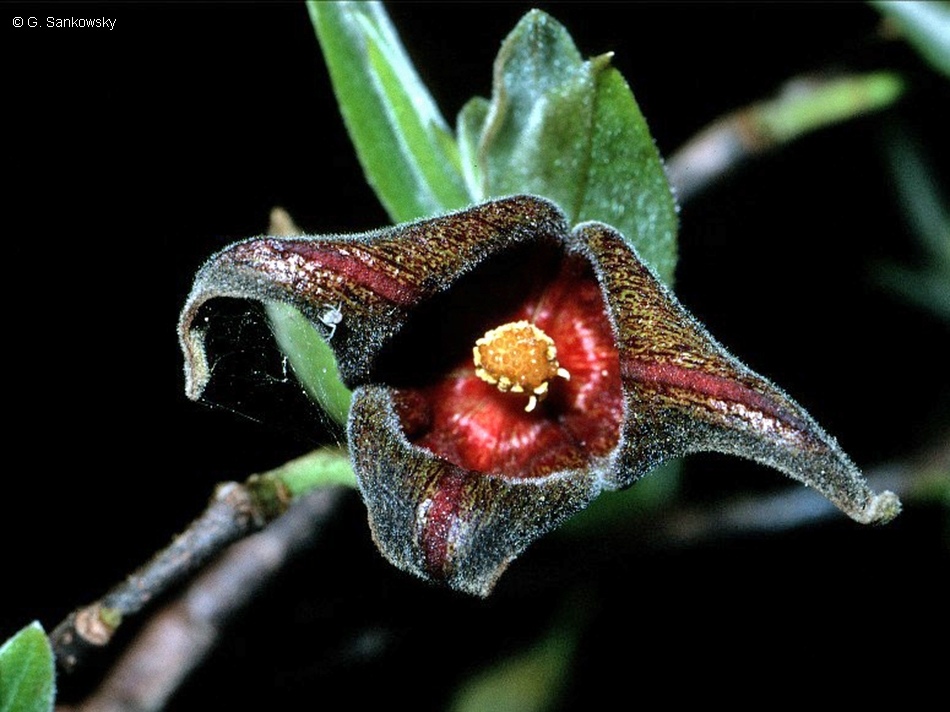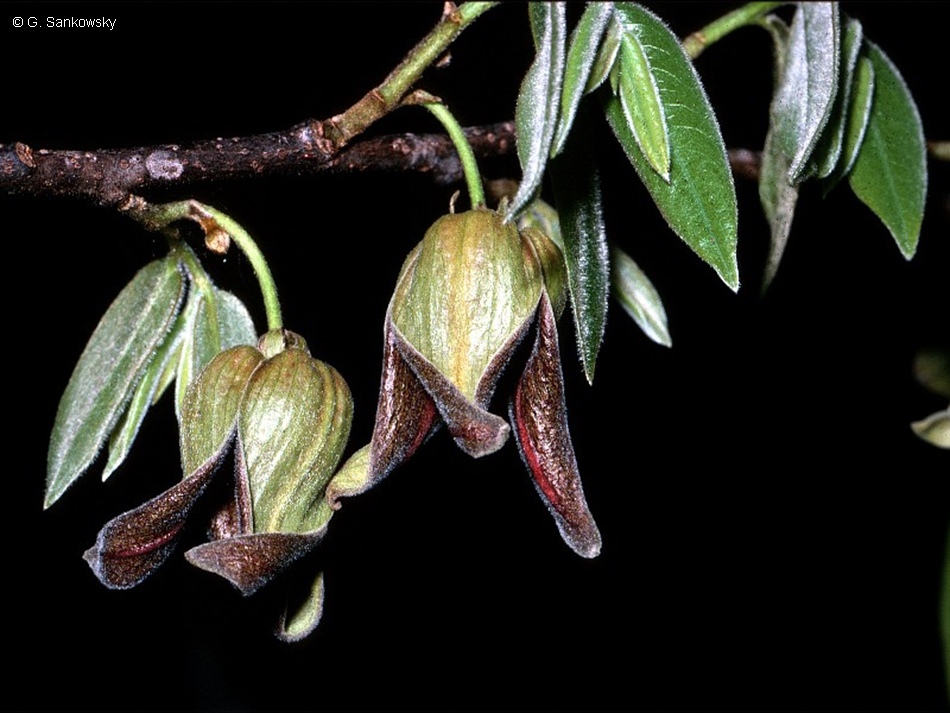Australian Tropical Rainforest Plants - Online edition
Miliusa horsfieldii (Benn.) Baill. ex Pierre




Pierre, J.B.L. (1881) Flore Forestiere de la Cochinchine : 38.
Beech; Miliusa
Living bark very fibrous and tough. Blaze layering fine and inconspicuous. Brownish stripes usually visible in the blaze.
Fruiting carpels ellipsoid or subglobular, about 20-35 x 17-20 mm, stalks about 10-20 mm long. Seeds usually 2-5 per fruiting carpel, testa smooth. Embryo minute.
Cotyledons broadly ovate, about 30 x 20 mm, hairy on the upper surface along midrib. At the tenth leaf stage: leaves ovate-oblong or ovate-lanceolate, apex acute to acuminate, mucronate, base cordate, hairy on the upper surface along midrib; petiole and young terminal bud densely clothed in pale brown hairs.
Food plant for the larval stages of the Fourbar Swordtail, Green Spotted Triangle and the Pale Green Triangle Butterflies. Sankowsky & Neilsen (2000).





